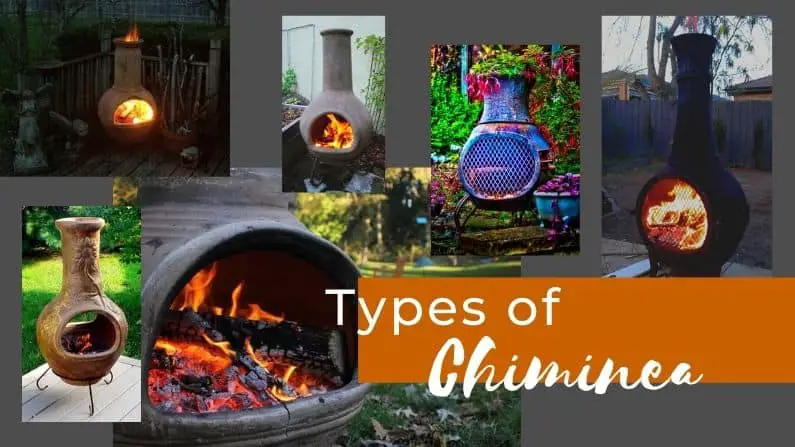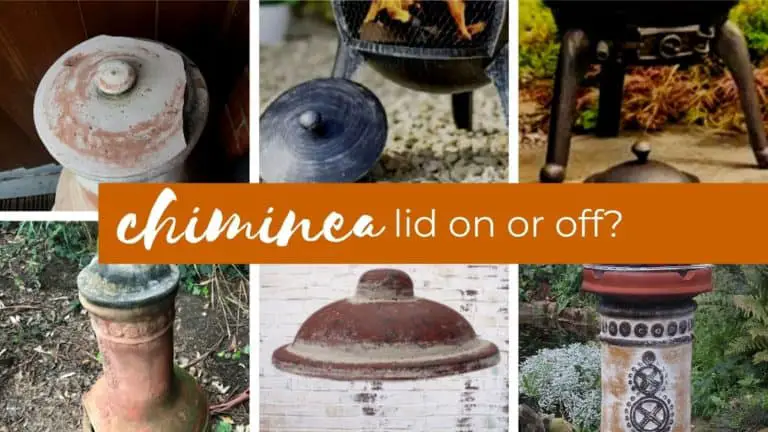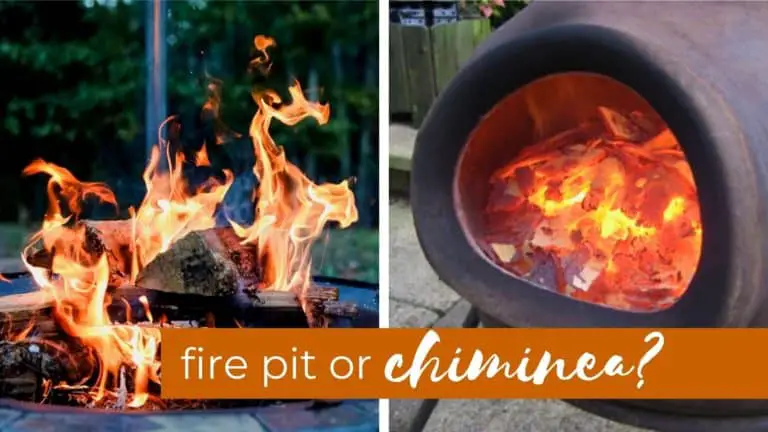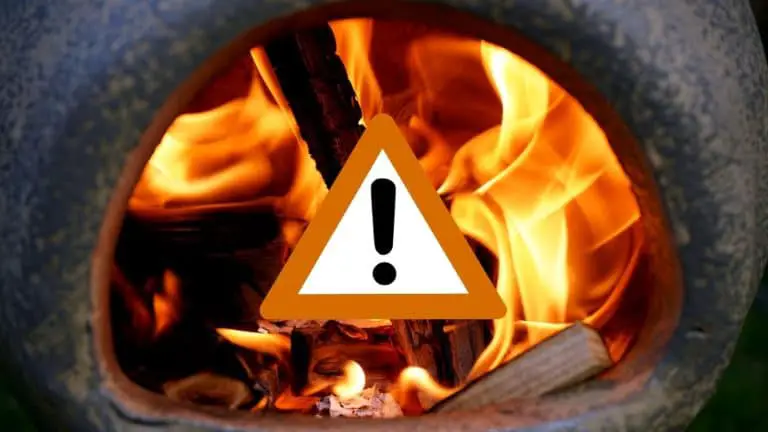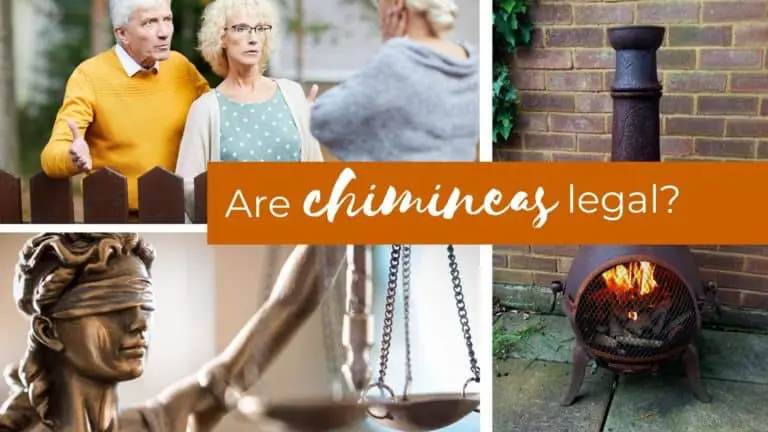Are Cast Iron Chimineas Better Than Clay?
Cast iron chimineas have the following advantages over clay chimineas:
- Less prone to cracking
- Can use multiple fuel types including coal and charcoal
- Better for cooking
- Low maintenance
- Higher heat output
- Longer lasting
What are the two types of chiminea that are the most popular in the UK currently? Yep, the title may have given us away – it’s clay chimineas and cast iron chimineas. They are by far the most readily available to purchase here and I’d like to help you make a decision about which type is best suited to you and your family.
Clay Chimineas
Clay is the material that chimineas were first made of when they first appeared in Mexico around 400 years ago. Clay was extremely practical as it was readily available locally and inexpensive. The basic shape of the bulbous bottom and the long cylindrical stack (or chimney) are easily made out of clay in separate parts and then pieced together to make the traditional shape we all recognise as a chiminea.
There are many reasons for someone to choose a clay chiminea and as a starter for ten, they are usually much cheaper than their iron counterparts…although there are some excellent, small, cast iron chimineas available now for the same price as clay chimineas.
There is a distinctly rustic style that clay chimineas exude that may fit in perfectly with other elements in your garden. Got a clay ornament or two or some lovely terracotta plant pots? Then a clay chiminea will likely look a treat in your garden.
Although great care should be taken around any fire, the clay chimineas don’t run as hot as the iron variety and so present less risk of serious burns. Care should always be taken when moving your chiminea, but clay chimineas are usually lighter and easier to park in the shed for the winter.
As clay chimineas come as one piece, there is no complicated assembly required. Just make sure that there is a stand included with your clay chiminea as even if it can stand on its own, it will need a stand to raise it off the ground.
When first getting your new chiminea you will need to cure it before having your first fire. You should fill the bottom of the fire bowl with some sand (or similar material) and even use a couple of fire bricks. This will help prop up your fire making the airflow much better. Curing your chiminea really just means burning 3 – 4 small fires in your chiminea and letting them cool down completely before another fire. This process should make it far less likely for your clay chiminea to crack when burning hot fire.
Clay Chimineas PROS
- Usually cheaper than iron chimineas
- Have a distinct rustic aesthetic
- Do not get as hot as cast iron chimineas – less chance of serious injury when accidentally touching
- Is the traditional material used for a chiminea giving you a more authentic feel
- No assembly is required – except for placing it correctly on a flat surface on the stand
- Easier to move and relocate (though remember each time you move it is another chance to drop it)
- They cool down quicker than cast iron chimineas
Clay Chimineas CONS
- Are more susceptible to breakages while moving
- More likely to crack from sudden temperature change
- Need to be thoroughly cured before first use
- More limited cooking options
- Can only burn wood
- Need separate stand in order to keep them raised above the ground – this is usually included with the purchase
- Need to be warmed up gradually when the outside temperature is low
- Require more maintenance to make it last – should have a heat resistant coating at least twice a year
- Not as efficient at emitting heat as iron chimineas
Cast Iron Chimineas
A more recent addition to the chiminea party, cast iron chimineas are now extremely popular and their durability alone is an attractive prospect when considering a purchase.
They also are much more fuel versatile as they can cope with higher heat. This means you can burn wood and charcoal in a cast iron chiminea. The ability to use charcoal opens up the world of cooking as it can be extremely challenging to cook on open flames of a wood fire.
Cast iron chimineas often have a built-in grill for cooking and so are a fantastic dual-purpose piece of kit for your garden. They offer a really efficient outdoor heat source and can easily keep a small group of folks nice and toasty.
For your main concerns with cast iron chimineas, we have to look at the fact that they do indeed need a larger area to cope with their heat emission. They also present an incredibly large and hot surface so great care should be taken to protect small children and family pets.
Cast Iron Chimineas PROS
- Last much longer than clay chimineas when cared for correctly
- Give off more heat than clay chimineas
- No need to cure your chiminea before first use
- No need to put sand in the bottom of the bowl
- Usually easier to use for cooking
- Can burn wood, charcoal or coal
- Wide range of both contemporary and traditional styles to choose from
- Often have an adjustable vent to control airflow to the fire
- Requires much less care and maintenance than clay chimineas
- They heat up faster
- More stable and less likely to be knocked over
Cast Iron Chimineas CONS
- Can be much heavier than clay chimineas and difficult to move
- Looks less natural than clay chimineas
- Must be extra vigilant with children and animals
- Vulnerable to rust
- More expensive than clay chimineas
- Tend to discolour surface it’s sat on due to high heat levels
- They often need to be assembled when purchased
- You will need to consider a larger clearance area as they run much hotter
- The fire hazard risk is significantly higher due to higher heat levels
What is the Best Material For a Chiminea?
Our final verdict is in, and we do prefer the cast iron chiminea. Perhaps for no other reason than we have one and we’ve fallen in love with it!
Regardless of which you choose, we hope that this article has helped you make a decision and you go on to have many happy years of chimineaing.
You might also like this article on the best chimineas on Etsy.




